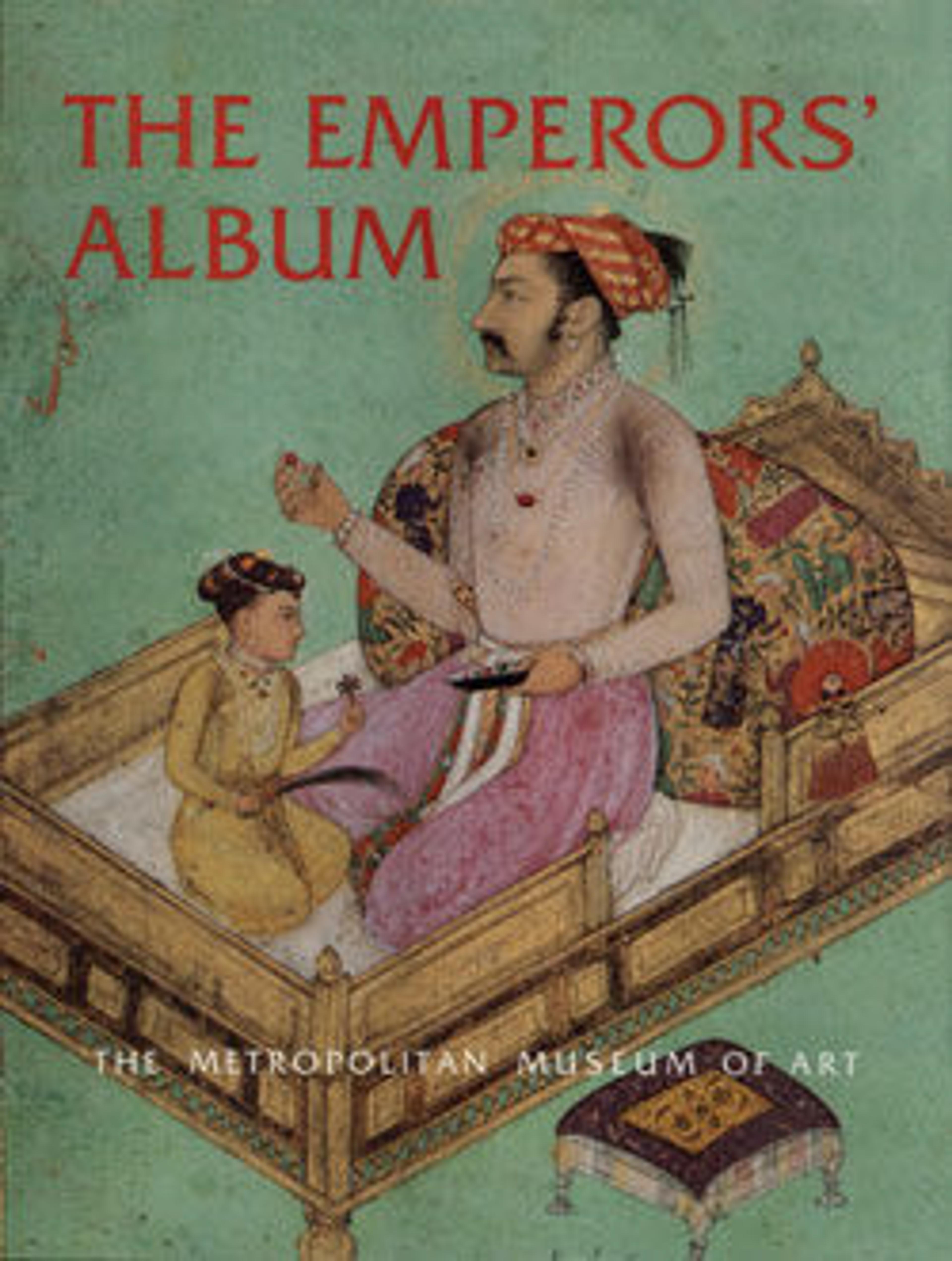"Dervish Leading a Bear", Folio from the Shah Jahan Album
This painting of a dervish reflects the Mughal interest in holy men. Prince Dara-Shikoh, Shah Jahan's eldest son, became a serious student of these spiritual beliefs and this painting was most likely executed under his patronage.
A dervish wearing a brown animal fur covering, earrings, bangles, an anklet leads a dark brown bear by a leash. The red earing and iron bangles are customary accessories worn by dervishes of the Qalandar and Haydari orders. His forearms and chest are dotted with markings, caused by self-inflicted burns. These marks, known as dagh (hot) in Persian, demonstrate faithfulness and love for God.
The scene suggests an allegory familiar to Sufis in which the higher self (here perhaps symbolized by the dervish) struggles to overcome his baser instincts (the bear). His burns, ragged garb, fasting, and wandering give him strength in this struggle.
The Shah Jahan Album, also known as the Emperor's Album, features fifty illustrated and calligraphic folios, forty-one of which belong to the Metropolitan Museum, and nine of which reside in the collection of the Freer Gallery of Art.
In lower part of second border around the portrait, Shah Jahan's handwriting identifies this as "Work of Govardhan."
A dervish wearing a brown animal fur covering, earrings, bangles, an anklet leads a dark brown bear by a leash. The red earing and iron bangles are customary accessories worn by dervishes of the Qalandar and Haydari orders. His forearms and chest are dotted with markings, caused by self-inflicted burns. These marks, known as dagh (hot) in Persian, demonstrate faithfulness and love for God.
The scene suggests an allegory familiar to Sufis in which the higher self (here perhaps symbolized by the dervish) struggles to overcome his baser instincts (the bear). His burns, ragged garb, fasting, and wandering give him strength in this struggle.
The Shah Jahan Album, also known as the Emperor's Album, features fifty illustrated and calligraphic folios, forty-one of which belong to the Metropolitan Museum, and nine of which reside in the collection of the Freer Gallery of Art.
In lower part of second border around the portrait, Shah Jahan's handwriting identifies this as "Work of Govardhan."
Artwork Details
- Title:"Dervish Leading a Bear", Folio from the Shah Jahan Album
- Artist:Painting by Govardhan (active ca. 1596–1645)
- Calligrapher:Mir 'Ali Haravi (died ca. 1550)
- Date:recto: ca. 1630–40; verso: ca. 1530–40
- Geography:Attributed to India
- Medium:Ink, opaque watercolor, and gold on paper
- Dimensions:H. 15 5/16 in. (38.9 cm)
W. 10 1/16 in. (25.6 cm) - Classification:Codices
- Credit Line:Purchase, Rogers Fund and The Kevorkian Foundation Gift, 1955
- Object Number:55.121.10.10
- Curatorial Department: Islamic Art
More Artwork
Research Resources
The Met provides unparalleled resources for research and welcomes an international community of students and scholars. The Met's Open Access API is where creators and researchers can connect to the The Met collection. Open Access data and public domain images are available for unrestricted commercial and noncommercial use without permission or fee.
To request images under copyright and other restrictions, please use this Image Request form.
Feedback
We continue to research and examine historical and cultural context for objects in The Met collection. If you have comments or questions about this object record, please contact us using the form below. The Museum looks forward to receiving your comments.
